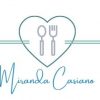What is Juicing?
Juicing and blending are often considered interchangeable terms. In reality, they serve very different purposes in a person’s journey to better health. To begin a juicing regimen, you have two options. Option number one is to buy a high-quality juicer, such as a Cuisinart or Breville. Any time you run food through it, whether it is a fruit or vegetable or an herb like mint or cilantro, the fibrous pulp will be separated from its water content. The result is a potent drink, chock full of vitamins and minerals that is easily absorbed by the body.
Buying a juicer can be expensive so a fantastic alternative is buying pre-packaged juice recipes. An important caveat to keep in mind is to watch for the juice content. Heavily marketed brands like V8 are laced with excessive sugar. Before checking out at the store, look at the label for any juice you want to purchase. A great way to tell if it is high-quality is to look at the sugar content. The best choices will have 30g or less of sugar per serving.
Now that you understand the basics of juicing, let’s delve into blending and how it benefits your health.
How is blending different from juicing?
Most Americans don’t get the recommended amounts of fiber each day (25g for women and 38g for men) (1). As a result, blenders have from companies such as NutriBullet, Vitamix and Ninja are becoming more and more popular. These kitchen tools are fantastic additions to a healthy lifestyle because you can make smoothies that compliment your current eating habits.
That said, using a blender is vastly different than juicing. Remember that juicing separates the fiber from the water content. Blending, however, takes everything in each ingredient, the fiber and water content, and mixes it all together.
This might overwhelm your system if you have never done this before. Studies show that drastically increasing your fiber consumption is not good as it creates side effects like bloating, gas, and abdominal pain (2). Only use fiber rich foods like kale, kiwis, spinach or bananas once your body is used to the additional fiber intake.
I recommend that you do two things to make the experience more enjoyable. First, keep the number of ingredients to a minimum; in the smoothies I make in my NutriBullet, there are no more than 3 foods. Secondly, you must add a significant amount of water, or any other liquid such as almond milk, than you might think. For every 2 ingredients, I add 8 to 10 ounces of liquid.
Diluting the added fiber with liquid will not only make the smoothie easier to drink, it will also help your body absorb the nutrients. Fiber binds and getting a large dose, undiluted, will attract the nutrients like quicksand, negating the nutritional benefits.
How to decide if juicing is your best option
Before you choose to begin juicing or blending to get more nutrients each day, let’s look at how you want to feel. Trying something completely new and different, should be a fun adventure. Shocking the body, especially if you’ve been eating a lot of processed foods, even with healthy food, is not a good idea.
A juicing regimen is a great idea for people who are just beginning their wellness journey. Juicing allows you to get an infusion of vitamins and minerals without overwhelming your system. Going from getting 10 grams a day to 20 grams a day can cause digestive stress (3) because your body won’t know how to handle that drastic increase.
It is best to increase your fiber intake by 2 or 3 grams every few days to see how your body accepts the boost. If you don’t experience any negative symptoms such as stomach cramps or constipation (4), add another 2 or 3 grams until you reach the recommended maximum of 25 or 38 grams per day.
Is blending better for you?
Blenders for more suitable for people who have been eating whole (non-processed) as the core of their meals foods for a while. In this instance, your body is much more capable of handling the fiber content from a smoothie. Drinking a smoothie from a blender is kind of like eating a salad, but in liquid form.
It is very easy to underestimate how much fiber you ingest from one smoothie, especially if you drink it too fast! Trust me, I learned this the hard way with my NutriBullet. The one exception to this rule is if you’re already a smoothie drinker. Smoothies are thicker than juices, so your body is a little bit better equipped to deal with the nutrition you get from a blended drink.


